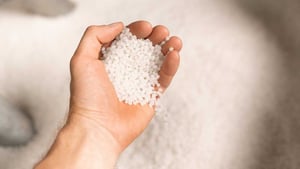Odour differences in polypropylene:the role of fibre reinforcement and processing parameters
We were recently asked: "Why does fibre-reinforced polypropylene (PP) often perform worse than unreinforced PP in odour assessments according to VDA 270?" Below you will find our answer to this question.
- The odour notes of parts made of fibre-reinforced polypropylene are often worse than those of unreinforced PP for technical reasons.
- One possible reason for this is the higher degree of processing, including the risk of introducing impurities.
- The sizing applied to bond the fibre and matrix and any negative influences resulting from this should also not be forgotten.
- However, another circumstance is likely to be really decisive, as both the melting points of fibre-reinforced materials and their viscosities are typically higher than their unreinforced analogues. The processing parameters adapted to this (especially higher injection moulding temperature and pressure) then often lead to a less favourable odour profile of the materials.


